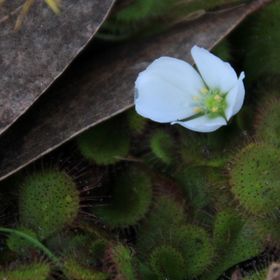The bird feeder is a popular place where size matters! Wild birds wait in the treetops for the seeds to be put out, and then it is on! This Sulphur Crested Co...
Read more
The bird feeder is a popular place where size matters! Wild birds wait in the treetops for the seeds to be put out, and then it is on! This Sulphur Crested Cockatoo is scattering the Crimson Rosella previously feeding happily.
Read less
Read less
Views
728
Likes
Awards
Great Shot
Superb Composition
Top Choice
Outstanding Creativity
Superior Skill
Magnificent Capture
Absolute Masterpiece
Top Ranks
Categories
Same photographer See allBehind The Lens
Discover more photos See all
Behind The Lens
Location
We moved to a rural property with natural bushland four years ago, so this photograph was taken just outside our back door. A bird feeder attracts wild birds - in this case a Sulphur Crested Cockatoo and two Crimson Rosella..Time
Birds around here seem to be more active mid-morning and mid-afternoon for some reason. They also get used to the routine, and know when to appear. The Sulphur Crested Cockatoos wait high in the trees, then swoop down to land on the feeders, while the Crimson Rosella fly in at a lower angle. This photograph was taken at 3:09pm on 24 April 2013, which is mid-Autumn in Australia.Lighting
The mid-Autumn light is softer, and West is directly behind the Sulphur Crested Cockatoo, providing just the right amount to back-light the feathers on the open wings.Equipment
My camera is a Canon 550 D with a Tamron 18 - 270mm lens.Inspiration
Too often, I see Cockatoos in cages where they don't even have room to open their wings, let alone fly. Watching them here, in the wild, they are such joyous birds. Some mornings they seem to chase each other around the sky just for fun, calling raucously and showing off their aerial skills. They are also stunningly beautiful in their natural environment and I never tire of watching them. I wanted to capture some of their "cheeky: personality while still showing that beauty. In this photo, I love the expression on the face of the Cockatoo as much as I love the wingspan.Editing
My aim is to get the photo right when I take it. I do use LightRoom to adjust correct small things related to exposure and contract. Occasionally I crop an image, but not frequently. Often I slightly deepen the blacks and shadows so that the colours show up a little more. I don't spend a lot of time post-processing.In my camera bag
I carry a Tamron Macro lens as I often photograph wild flowers, some of which are only 5cm fully grown (including the flower stalk). Also two camera stands - a tiny one for wild flowers and a standard one for shrubs and bushes.Feedback
I think it is important to have a sense of the rhythm of the seasons, and the way the light shifts throughout the day. The birds come every day, but if I had tried to take this photograph in the morning, the sun would be reflecting off the front of the bird, making the feathers look over-exposed and losing the detail. Having familiarity with the bird habits helps enormously. I knew approximately where the birds would land before they flew to the feeder, and I knew the approximate angle and direction they would use to fly in. Spending time observing is just as important as the settings on the camera.













































